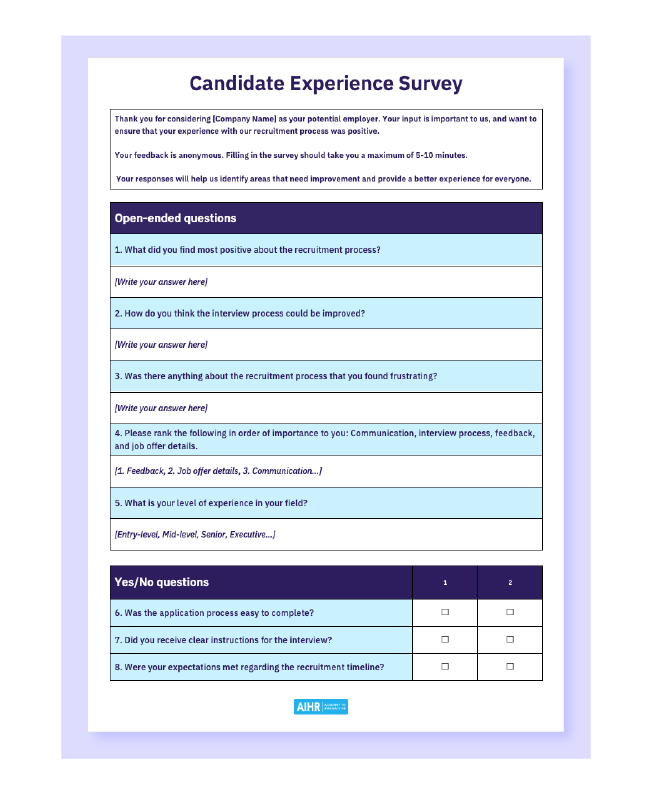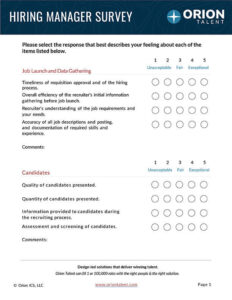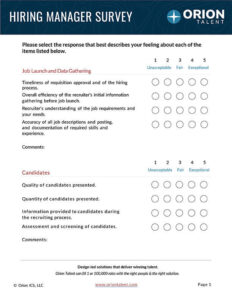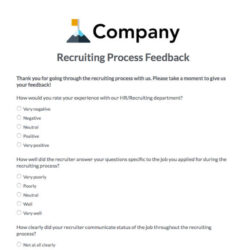Finding the right person for a role is one of the most critical tasks in any organization. It is not just about filling a vacancy; it is about building a strong team, fostering a positive culture, and ensuring long-term success. However, without a structured approach, the interview process can often feel subjective and inconsistent, leading to hiring decisions that might not always be the best fit.

That is where a well-designed candidate evaluation survey comes into play. It transforms a potentially chaotic and biased process into a fair, objective, and data-driven exercise. By standardizing your feedback collection, you can ensure every candidate is assessed against the same criteria, allowing for meaningful comparisons and ultimately, better hiring outcomes.
Crafting the Ideal Candidate Evaluation Survey
Developing an effective survey template requires thoughtful consideration of what truly matters for a role and how to measure it consistently. The goal is to move beyond gut feelings and subjective impressions, creating a framework that captures objective data and insights from every interviewer. This standardized approach helps mitigate unconscious biases and ensures a level playing field for all applicants, making your hiring process more equitable and defensible.
Begin by identifying the core competencies and attributes essential for the position. These should be clearly defined and measurable. For instance, instead of asking "Was the candidate good?", frame questions around specific skills like problem-solving ability, communication clarity, or technical proficiency. It is also crucial to involve key stakeholders, such as hiring managers and team leads, in the development process to ensure the template aligns with their needs and the realities of the job.
A well-rounded survey will incorporate a mix of question types. Rating scales, perhaps from 1 to 5, are excellent for quantifying performance across various criteria, making it easy to compare candidates numerically. However, do not overlook the power of open-ended questions. These provide valuable qualitative data, allowing interviewers to elaborate on specific strengths, weaknesses, or memorable interactions that a simple rating might miss. They offer context and deeper insights that are crucial for making informed decisions.
Consider structuring your survey into distinct sections, mirroring the different aspects of a candidate’s profile. This not only makes the survey easier to complete but also ensures all critical areas are covered systematically. When considering the best survey template for evaluating job candidate, thinking about these sections helps streamline the feedback process.
Key Sections to Include in Your Evaluation Template
- **Technical Skills and Experience:** Assess specific industry knowledge, software proficiency, and relevant past work experience. This section might include specific technical questions or scenario-based evaluations.
- **Soft Skills and Behavioral Traits:** Evaluate communication style, teamwork capability, leadership potential, adaptability, and problem-solving approaches. Behavioral questions (“Tell me about a time when…”) are particularly useful here.
- **Cultural Fit and Values Alignment:** Explore how well the candidate’s personal values and working style align with your company culture. This is not about seeking clones, but about ensuring they can thrive within your unique environment.
- **Overall Impression and Recommendation:** A summary section where interviewers can provide a final recommendation (e.g., “Highly Recommend,” “Recommend,” “Do Not Recommend”) and offer any concluding thoughts or concerns.
Implementing and Maximizing Your Evaluation Template’s Impact
Having a robust survey template is only half the battle; its true value is unlocked through consistent and effective implementation. It is essential that all interviewers understand how to use the template correctly and why it is important. Providing clear guidelines and perhaps even a brief training session can significantly improve the quality and consistency of the feedback collected. Emphasize the importance of timely completion, ideally immediately after each interview, while the candidate’s performance is still fresh in mind.
Standardizing your post-interview feedback process offers numerous benefits beyond just making better hiring decisions. It creates a valuable data repository that can be leveraged for future recruitment efforts. By analyzing trends in candidate performance across different roles or recruitment channels, you can identify strengths and weaknesses in your own hiring process. This data can inform adjustments to job descriptions, interview questions, or even your overall talent acquisition strategy, leading to continuous improvement.
Furthermore, a well-documented evaluation process can be invaluable for compliance and legal defensibility. In an era where fair hiring practices are scrutinized, having clear, consistent, and objective evaluation records can protect your organization from potential discrimination claims. It demonstrates a commitment to fairness and equity, showing that hiring decisions are based on merit and predefined criteria, not arbitrary judgments.
Think about how the collected data will be analyzed and used. Will you use a scoring system to rank candidates? How will discrepancies in ratings between interviewers be addressed? Establishing a clear process for reviewing and discussing the compiled feedback is crucial. This often involves a debrief session with the hiring team to collectively discuss each candidate’s strengths and weaknesses based on the aggregated survey results, leading to a consensus decision.
Ultimately, a standardized evaluation process through a well-crafted survey template transforms hiring from a series of individual impressions into a cohesive, data-driven strategy. It ensures that every candidate receives a fair and consistent assessment, that your organization makes the most informed hiring choices, and that you build a strong foundation for your team’s success. It is an investment in your company’s future, ensuring you bring in the talent that will drive growth and innovation.


